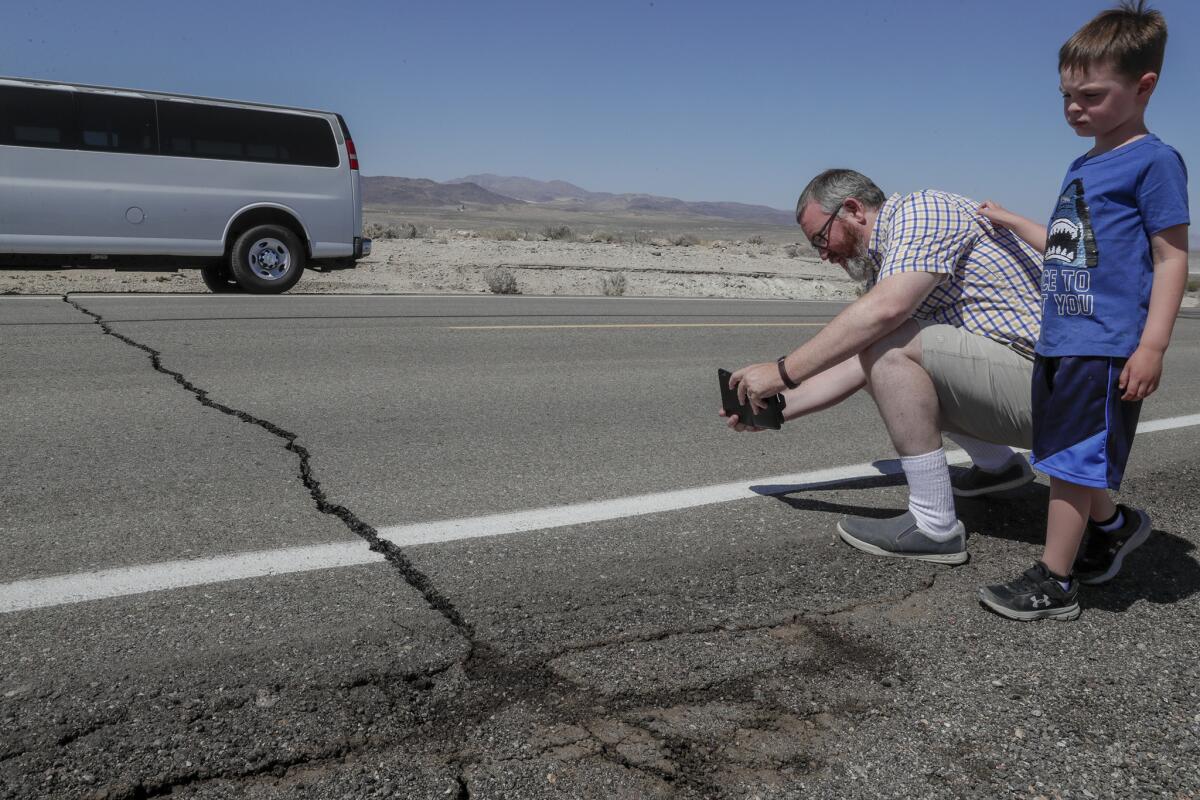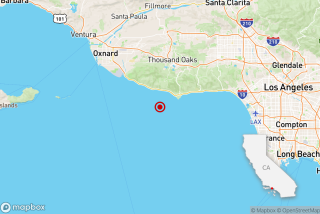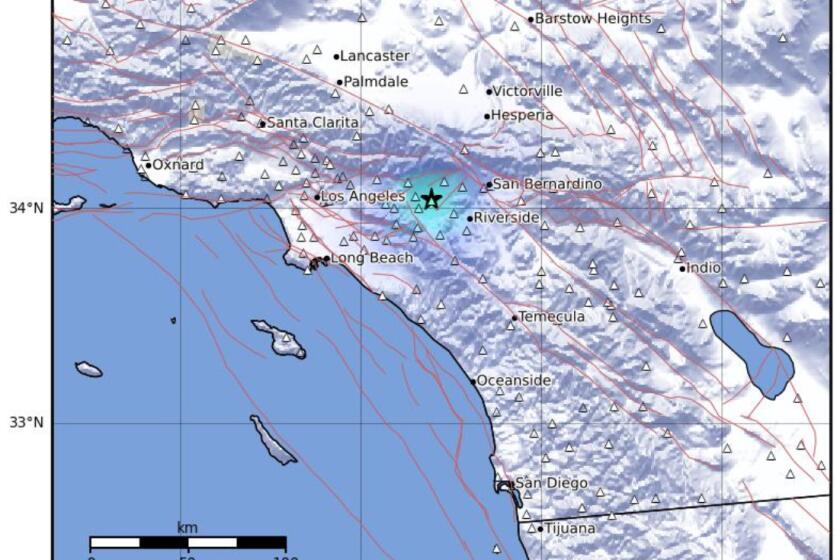Earthquake aftershocks could last months or even years, scientists say

Reporting from RIDGECREST, Calif. — The aftershocks from the July 4th magnitude 6.4 earthquake will probably “go on for months, if not years,” Caltech seismologist Egill Hauksson said.
That means the odds are decent that there could be another aftershock of magnitude 5 or greater at some point. A magnitude 5.4 aftershock already occurred early Friday morning, strong enough to awaken some residents of Los Angeles about 125 miles away.
Aftershock sequences can last years, something that Los Angeles dealt with in the aftermath of the 1994 magnitude 6.7 Northridge earthquake.
By midday, there have been at least 17 magnitude 4 aftershocks since the mainshock, and at least 1,200 aftershocks.
The continuing shaking left many residents rattled.
FULL COVERAGE: 2nd major quake in two days hits Southern California »
Shallice, a 32-year-old mother of five, sat outside the county library with her kids, waiting to be able to volunteer to clean up the shelves.
A car drove by and honked loudly, and the family jumped and looked toward the sound.
“We’re definitely jumpy,” said Shallice, who declined to give her last name.
Noises and small movements all day have the children anxious, she said. Earlier, they heard a car exhaust backfire and screamed.
As aftershocks have rolled through, she has watched her children’s reactions.
4th of July earthquake won’t delay the Big One. And it might have worsened quake strain »
“If you watch kids, everybody just watches,” she said. “It’s natural instinct. Your mind just goes into instant mode of what do I need to do in a split second, and you have all these going on.”
Further study of the July 4th mainshock showed that the fault ruptured along a length of fault 10 miles long, from a remote point northeast of Ridgecrest, Calif., a city of 29,000 people, and continued southwest almost all the way to the city limits, Hauksson said.
Hauksson said the earthquake is a reminder that a big earthquake can hit California at any time. “People ought to think about their earthquake preparedness,” he said.
Scientists from the U.S. Geological Survey, California Geological Survey and elsewhere were already fanning over the area, documenting how the ground was literally broken by the earthquake, including with preliminary reconnaissance by helicopter. There’s some complication given that the rupture continues on to the Naval Air Weapons Station China Lake, a sprawling facility larger than the size of Rhode Island, and it’s taking time to secure permission to analyze the broken ground on the Navy property.
Expect more earthquakes, possibly even stronger ones, seismologists say »
Photos already indicate that in some places along the ruptured fault, one side of the earth moved past the other by perhaps 6 to 8 inches, said Rob Graves, research geophysicist with the USGS.
In other areas, there’s a broad zone of deformed earth distributed over perhaps a couple of hundred feet on either side of the fault, Graves said.
More to Read
Sign up for Essential California
The most important California stories and recommendations in your inbox every morning.
You may occasionally receive promotional content from the Los Angeles Times.












